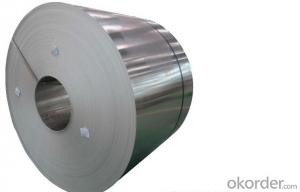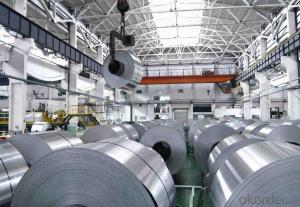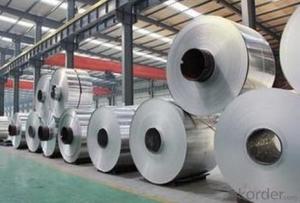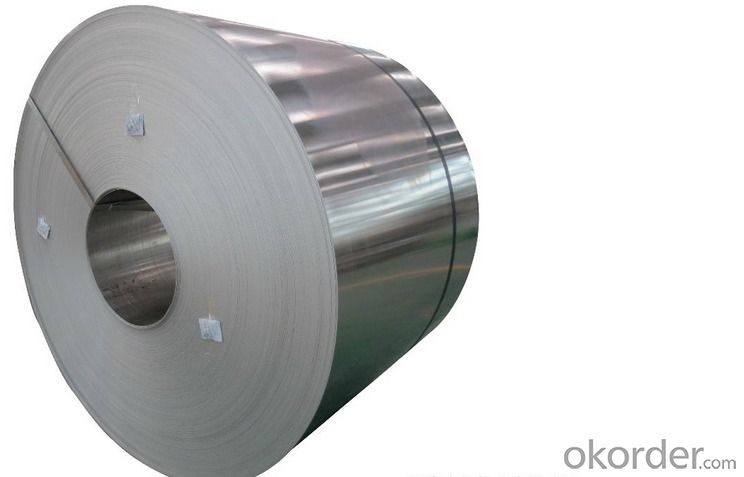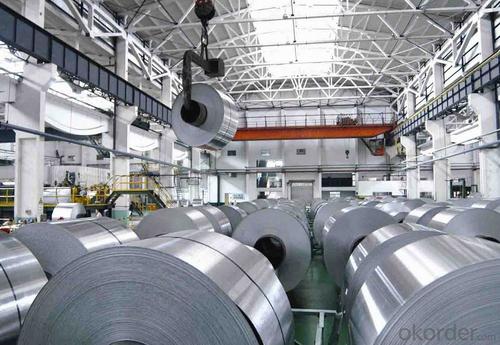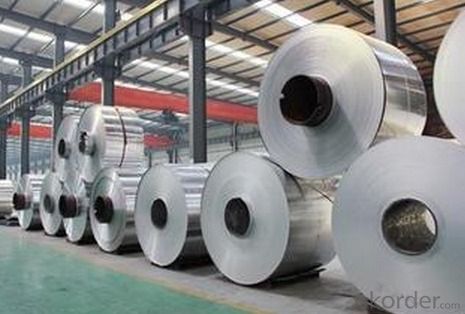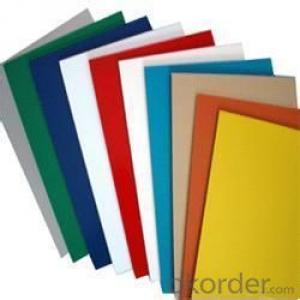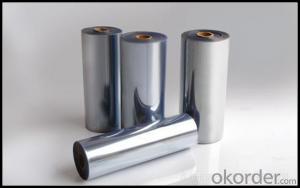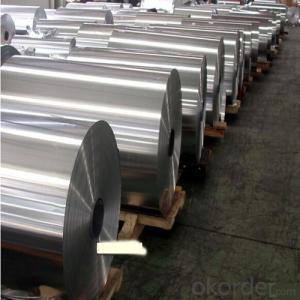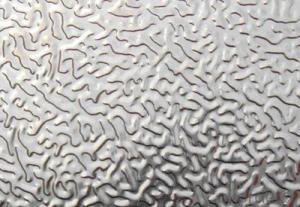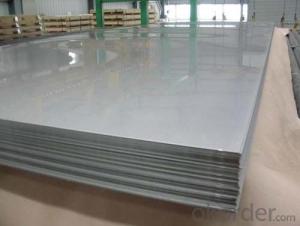Architectural Aluminum Sheets - Anodized Aluminum Sheet for Different Applications
- Loading Port:
- Shanghai
- Payment Terms:
- TT OR LC
- Min Order Qty:
- 1 m.t.
- Supply Capability:
- 2000 m.t./month
OKorder Service Pledge
OKorder Financial Service
You Might Also Like
Specification
Structure of Prepainted Aluminium Coil PPGL Description:
Width and length:to cut as your requirement thickness:0.15-0.3m Tensile Strength:130~150MPa .YieldStrength:130-145.Elongation:≥2%,Earing Rate:≤2%.There are no stop marks or pinch marks on the surface of aluminum sheets.
Main Features of Aluminium Coil PPGL:
SPANISH paper Marca has released a top 10 players of 2015 list on Friday with Leo Messi being placed first and Cristiano Ronaldo 8th. Rather than picking the players themselves, Marca left the ordering up to reader's votes.
Images of Aluminium Coil PPGL:
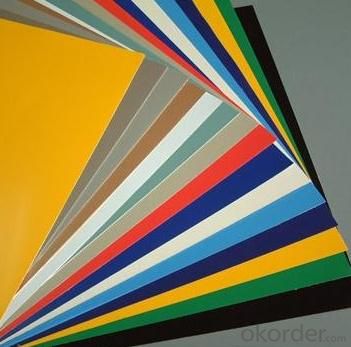
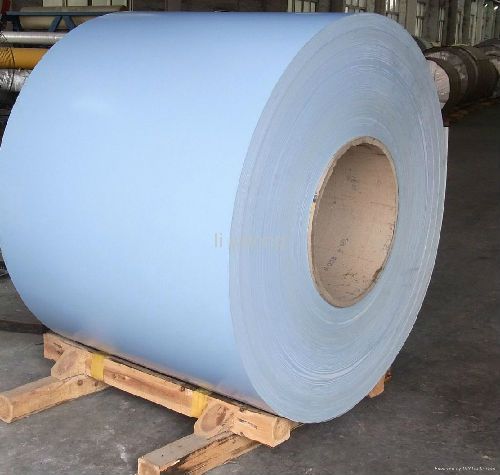
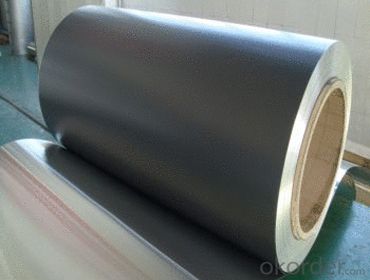
Aluminium Coil PPGL Specification:
Product Name | Aluminum Coil |
Alloy | A1100,A3003,A1050,A8011,A3105,A5005 etc |
Thickness | 0.022mm to 3.0 mm |
Width | Standard width:1240mm; 1200mm |
All width: 30mm - 1600mm | |
Diameter | out dia:1200mm |
Interior dia: 405mm,505mm | |
Weight | 2.5 T/coil,3.0 T/coil |
Coating | PE,PVDF,ACRYLIC |
Surface | Embossed, mill finish, coated; aluminum gutter coil |
Color | AS to all RAL color |
Gloss | 10-90%(EN ISO-2813:1994) |
Coating Thickness | PE: more than 18 micron |
PVDF: more than 25 micron | |
Coating Hardness (pencil resistance) | More than 2h |
Coating adhesion | 5J(EN ISO-2409:1994) |
Impact Resistance | No peeling or cracking(50 kg/cm,ASTMD-2794:1993) |
Flexibility (T-bend) | 2T |
MEK resistance | More than 100 |
FAQ of Aluminium Coil PPGL:
That accolade was locked up by five trophies - the Copa del Rey, European SuperCup, La Liga, the Champions League and the FIFA Club World Cup.
- Q: I have an aluminum block engine in my wakeboard boat which is built for the lakes, now i live on salt water and was wondering the effect saltwater would have on the engine block as water goes through to cool it.
- it will eat it up... install a heat exchanger
- Q: How do you prevent oxidation of exposed edges of aluminum sheets?
- One effective way to prevent oxidation of exposed edges of aluminum sheets is by applying a protective coating or sealant. This creates a barrier between the aluminum and the surrounding air, preventing the metal from coming into contact with oxygen and moisture, which are the main causes of oxidation. Additionally, storing the aluminum sheets in a dry and controlled environment can also help minimize the risk of oxidation.
- Q: What kind of welding rod should be used for aluminum plate, welding and welding?.
- Aluminum plate welding, now mostly choose TIG welding, MIG welding to welding, selection of welding rod is less. If the choice of electrode welding, can recommend selection of MG400 electrode, the electrode is produced by American MG welding, gas welding and welding, can all Aluminum Alloy, good welding performance. Need to use DC welding machine, welding electrode as far as possible upright, welding speed is relatively fast, about two times the carbon steel electrode. A kilogram of electrodes is nearly seventy.
- Q: which has more volume? a kg of gold or a kg of aluminum? please explain in physics terms
- Aluminum. Since it's less dense than gold, you need more aluminum to get a kg. Density = mass/volume. Density of gold density of aluminum
- Q: How does the alloy composition affect the mechanical properties of aluminum sheet?
- The mechanical properties of aluminum sheet are significantly influenced by its alloy composition. These properties include tensile strength, yield strength, elongation, hardness, and fatigue strength, among others. To begin with, the overall strength of the aluminum sheet is greatly affected by its alloy composition. Aluminum alloys are commonly mixed with elements like copper, manganese, magnesium, and silicon to enhance their mechanical properties. These alloying elements form solid solutions or precipitates within the aluminum matrix, resulting in a significant increase in material strength. For example, the addition of copper to aluminum forms a solid solution that enhances the sheet's tensile strength and yield strength. Furthermore, the ductility and formability of the aluminum sheet are also impacted by its alloy composition. Some alloying elements, such as magnesium and silicon, can reduce the ductility of aluminum alloys. This reduction in ductility makes the sheet more susceptible to cracking or fracturing when subjected to stress. Conversely, certain alloying elements can improve the formability of aluminum sheet, making it easier to shape or bend without cracking. Moreover, the resistance to corrosion and heat of aluminum sheet is influenced by its alloy composition. For instance, aluminum alloys with a high magnesium content, such as the 5000 series, exhibit excellent corrosion resistance and are commonly used in marine applications. Additionally, specific aluminum alloys are developed for high-temperature applications, with alloying elements like copper and zinc enhancing their heat resistance. Finally, the microstructure of aluminum sheet is affected by its alloy composition, which in turn affects its mechanical properties. Different alloy compositions can result in various microstructural features, including grain size, grain boundaries, and phase distribution. These microstructural characteristics can impact the sheet's strength, hardness, and fatigue resistance. In conclusion, the alloy composition plays a crucial role in determining the mechanical properties of aluminum sheet. Manufacturers can tailor the sheet's properties to meet specific requirements, such as strength, ductility, formability, corrosion resistance, and heat resistance, by carefully selecting the appropriate alloy composition.
- Q: This question asks about the influence of aluminum sheets on the thermal insulation properties of a building.
- <p>Aluminum sheets, due to their high thermal conductivity, can actually reduce the insulation of a building if not properly used. They can conduct heat quickly, which means that they may transfer heat from the outside to the inside or vice versa, depending on the temperature difference. This can lead to increased energy consumption for heating or cooling. However, when used as a reflective barrier in combination with proper insulation materials, aluminum sheets can help reflect heat and improve insulation by reducing heat transfer. It's crucial to use aluminum sheets correctly and in conjunction with other insulating materials to achieve optimal thermal performance in buildings.</p>
- Q: What is the thickness range of aluminum sheets?
- The thickness range of aluminum sheets can vary depending on the specific application and industry standards. However, commonly available aluminum sheets typically range in thickness from 0.006 inches (0.15mm) to 0.25 inches (6.35mm). For more specialized applications, thicker aluminum sheets may be available. It is important to note that different alloys and grades of aluminum may have different thickness ranges, so it is essential to consult the specific requirements and standards of the intended use case.
- Q: Can aluminum sheets be used for signage purposes?
- Yes, aluminum sheets can be used for signage purposes. They are commonly chosen for outdoor signs due to their durability, weather resistance, and lightweight nature. Aluminum sheets can be easily customized, printed on, and shaped to create professional and long-lasting signage.
- Q: What are the different cutting tools used for aluminum sheets?
- There are several cutting tools that can be used for aluminum sheets. 1. Circular Saw: A circular saw with a carbide-tipped blade can be used to cut aluminum sheets. It is important to use a blade with fine teeth to ensure a clean and smooth cut. 2. Jigsaw: A jigsaw equipped with a metal-cutting blade can also be used to cut aluminum sheets. This tool allows for more intricate cuts and curves. 3. Bandsaw: A bandsaw with a fine-toothed blade is another option for cutting aluminum sheets. It provides a straight and precise cut, making it ideal for larger or thicker sheets. 4. Shears: Electric or manual shears can be used to cut aluminum sheets. They are particularly useful for straight cuts and can achieve a clean finish. 5. Plasma Cutter: A plasma cutter can be used for cutting aluminum sheets, especially for thicker materials. It uses high-temperature plasma to melt through the metal, resulting in a precise and efficient cut. 6. Laser Cutter: Laser cutting machines are commonly used for cutting aluminum sheets. They produce a high-powered laser beam that melts and vaporizes the material, allowing for precise and intricate cuts. It is important to wear appropriate safety gear, such as gloves and goggles, when using any of these cutting tools. Additionally, choosing the right tool depends on the thickness of the aluminum sheet and the desired cut. It is recommended to consult a professional or refer to the manufacturer's guidelines for the specific tool being used.
Send your message to us
Architectural Aluminum Sheets - Anodized Aluminum Sheet for Different Applications
- Loading Port:
- Shanghai
- Payment Terms:
- TT OR LC
- Min Order Qty:
- 1 m.t.
- Supply Capability:
- 2000 m.t./month
OKorder Service Pledge
OKorder Financial Service
Similar products
Hot products
Hot Searches
Related keywords
